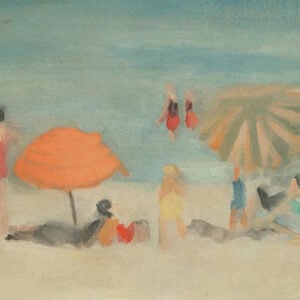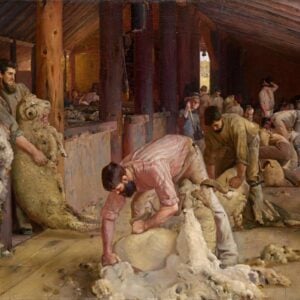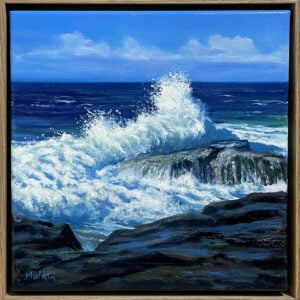One of the great painters of the Golden Age of Dutch painting, Frans Hals was known for his group and individual portraits, but more particularly, for a uniquely individual style that incorporated obvious brushstrokes, and realistic facial expressions to bring life and character to his subjects.
I’ll cover:
- Key Details
- Facts and Ideas
- Notable Paintings
- Quotes
- Resources
- Want to Learn More?
- Thanks for Reading!

Key Details
Birth: Variously reported as 1580, 1581, and 1582, in Antwerp, Spanish Netherlands
Death: 26th August 1666 – Haarlem, Dutch Republic (now, Netherlands)
Education: Studied in Haarlem under Karel van Mander, a painter, poet, art historian and art theoretician, who, in his painting, largely promoted the style known as Northern Mannerism. However, even in his early works, Hals’ paintings show little of the style of that discipline, and he seems to have been more influenced by viewing paintings from the likes of Peter Paul Rubens (1577-1640) and Sir Andrew van Dyck (1599-1641). In his late 20s, Hals joined the painter’s guild of St Luke.
Medium: Oil on canvas
Style: Baroque
Facts and Ideas
- Hals lived, studied and worked, for his entire adult life in the Dutch Republic (now Netherlands) city of Haarlem, having moved there from Antwerp with his family, along with many others, due to the Spanish invasion of that area.
- He apparently made a brief return visit to his birthplace of Antwerp around 1616, and this may be where he became aware of, and was then influenced by the works of Rubens and van Dyck.
- He was a skilled sketcher and draftsman, though no sketches of his remain. Hals derived his main income from portraits of the wealthy-both singly, or in groups-and from group portraits for public institutions. However, he was heavily drawn to painting people from every walk of life and social level, be they fisher folk, the local prostitutes, musicians, and children at play. In later life, he also took in art restoration work for his city council.
- While traditional portraits of the day focussed on depicting the likeness of the subject, or subjects, Hals made unique use of tone, and significantly, obvious brushstrokes, to bring his characters to life. He employed what may be known in stage production as mise en scène to create a story snapshot. This method evoked more than mere likeness, but revealed a sense of character, mood, state of mind, even of activity. This was new and unique at the time, but the impressionists of later centuries would find Hals’ ground-breaking style remarkable.
- The years 1630-1650 were perhaps his most prolific, during which he painted more than 100 single, group, and family portraits.
- From about 1650, the tide seemed to turn, and art taste shifted towards the more elegant portrait styles of, for example, Anthony van Dyck. With declining fortunes, Hals survived by selling his personal possessions, and in 1662-four years before his death-he was granted a public pension by the city. During these latter years of Hals’ productivity, his subjects revealed more knowing, thoughtful and subdued expressions, perhaps mirroring his own circumstances.
- Frans Hals greatly influenced several artists including Courbet, Manet, Whistler and Max Liebermann.
- Where Hals’ sketching style of paint application was termed a rough style during his lifetime, and was unfashionable at the time of his death, artists like Courbet sought to emulate the natural style with its sense of spontaneity.
- In 1883, the prominent Belgian art journal, Art Moderne, praised Hals as a precursor of Modernism and one of the greatest painters of all time.
Notable Paintings
Jacobus Zaffius, 1611. The earliest known work of Hals, painted when he was 28-30 years old. He had begun as an independent artist only the year before, and this was his first commission. At only 55cm by 41cm it was a relatively small work, painted on a wood panel.

Banquet of Officers of the Civic Guard of St. George at Haarlem, 1616. One of Hals’ earliest works of significance and a work that brought him to prominence. By use of brushstrokes and color, it brings to life the scene and the subjects, unlike any similar paintings of this subject matter at the time.

Yonker Ramp and His Sweetheart, 1623. The word yonker translates to young gentleman, and here Hals portrays a young man clearly having a fine time in an inn, with a young woman who is probably a prostitute, given her direct stare and her lack of comportment. This painting, like so many of Hals’ works, captures a lively and realistic everyday scene, in contrast to the works of other portraitists of the time, whose subjects dressed and arranged themselves decorously for a serious sitting.

The Laughing Cavalier, 1624. On close inspection, it can be seen that the subject was not laughing but merely smiling, although the upturned mustache adds to the effect. Further, he may not have actually been a cavalier, or military person, but as some art historians have suggested, the subject was more than likely the wealthy Dutch textile merchant, Tieleman Roosterman. The painting arrived in England in the mid-1800s and was exhibited at the opening of the Bethnal Green Museum in 1872. The title, The Laughing Cavalier, was the invention of the press and the public of Victorian England and became known as one of the greatest portraits of the Dutch masters.

This enlargement of the sleeve details part of Hals’ The Laughing Cavalier painting, in order to show the incredibly fine and meticulous quality of his work during this early period.

Two Laughing Boys with a Mug of Beer, 1626. Of note in this painting is the accomplice or onlooker, which is quite common to several of Hals’ realistic portraits in everyday scenes. Quite aside from artistic merit, this painting has aroused interest for another reason-it has been stolen three times-in 1988, 2011, and most recently in August 2020.

Gypsy Girl, 1628-30. A classic example of Hals’ use of light, brushstrokes, facial blemishes and facial expression to bring life, character and meaning to what might otherwise have been no more than a quality two-dimensional likeness.

Tieleman Roosterman, 1634. Given the subjective assessment of The Laughing Cavalier, it is perhaps worth considering this portrait, painted some 10 years later, whereby the subject, Tieleman Rossterman bears a remarkable resemblance to the subject of The Laughing Cavalier work.

Frans Hals, Portrait of a Woman Holding a Fan, c.1640. The first of these two works, Portrait of a Woman Holding a Fan, is particularly interesting when contrasted with Regentesses, painted 24 years later. In the earlier work, Hals has meticulously painted the woman’s face to show its genteel softness, whereas in the later work of the Regentesses, while the women’s faces are still uniquely recognizable-and the women have been identified by art historians-their faces have been painted in what critics of the time referred to as his rough style.


Regents of the Old Men’s Almshouse, 1664. While none of the artist’s skill has lapsed, his subjects exhibit a more somber tone, perhaps reflecting Hals’ advancing years and declining circumstances. This is the artist’s last known painting, and again, is in what was referred to as his rough style, later reflected in the French impressionist style of the 1870s and 1880s.

Quotes
“Every cuff he painted in his paintings informs on the habitual movements of the wrist it hides.” – John Berger, Art Historian
“Frans Hals must have had twenty-seven blacks.” – Vincent van Gogh, commenting on Hals magnificent use of colour.
“What a joy it is to see a Frans Hals, how different it is from the paintings-so many of them-where everything is carefully smoothed out in the same manner.” – Vincent van Gogh, in a letter to his brother.
“The painting of humanity, let’s rather say of a whole republic, through the simple medium of the portrait.” -Vincent van Gogh.
“Whenever I see a Frans Hals, I feel the desire to paint, but when I see a Rembrandt, I want to give it up.” – Max Liebermann
Resources
Met Museum – For high-resolution photos of his paintings.
Want to Learn More?
You might be interested in my Painting Academy course. I’ll walk you through the time-tested fundamentals of painting. It’s perfect for absolute beginner to intermediate painters.
Thanks for Reading!
I appreciate you taking the time to read this post and I hope you found it helpful. Feel free to share it with friends.
Happy painting!
Dan Scott

Draw Paint Academy







Thank you Dan for your insightful analysis. I really appreciate the errors you went to in order to show us such high resolution images.